News & Information
Our goal is to provide relevant articles to help keep runners safe.
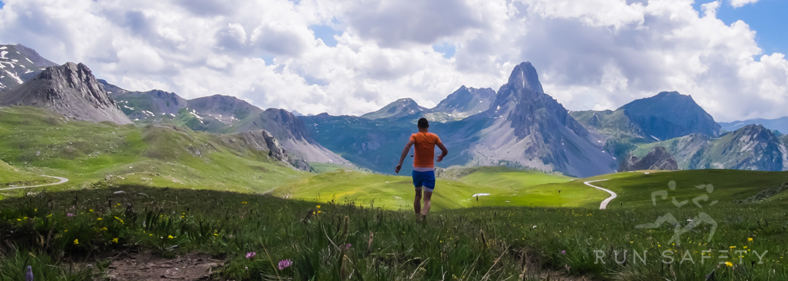
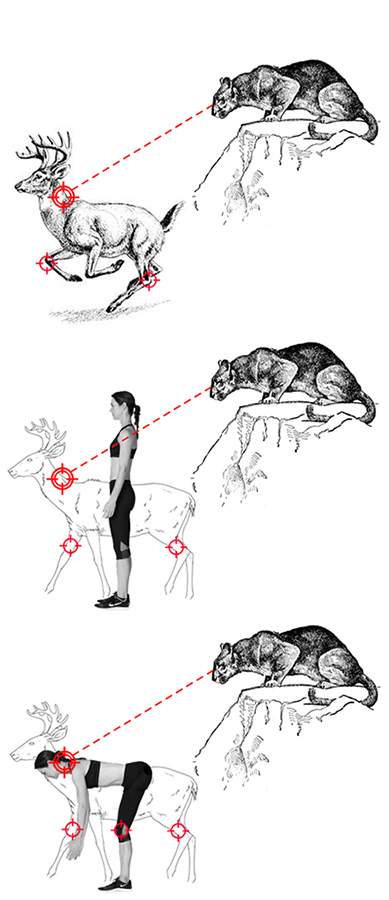
post date: 08.11.15
Keep Your Eyes Open And Be Prepared For Texas Wildlife
As the weather heats up in the summer months, the natural water sources and native plants dry up. Deer and other animals migrate closer to landscaped plant materials which are watered by humans. These plants now provide an alternative source of moisture for animals to absorb when there is less water available in the environment. The natural predators follow their prey animals to the areas that are shared by humans.
Prevention & Safety | Awareness of How Predators Think Can Prevent Injury
Mountain Lions are typically fearful and avoid humans as prey. It is most likely that it is only when a human is easily recognized as prey that they are likely to be attacked. Be aware think about your cues. Mountain lions are instinctually programmed to know to attack at the neck and orient using anatomical cues—the head, neck and legs are in the expected positions. A standing human does not provide the correct anatomical cues as easily. A bent-over human now provides the correct anatomical cues and orientation.
Remember:
- Stand tall and stay upright
- Do not bend down to tie shoes or remove stickers, etc.
- If necessary, put your foot up on a tree, rock or fence to remain upright
- If you do encounter a mountain lion, stand tall, raise your arms and make other loud noises
- Do NOT run away as it might trigger a mountain lion to chase
Learn about Mountain Lions in Central Texas:
Back To Top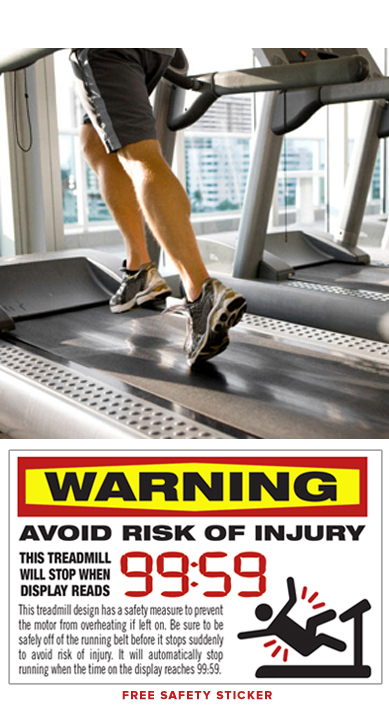
post date: 05.06.15
Awareness of Automatic Shut-Off Function Can Prevent Injury
All Treadmills STOP at 99 minutes, 59 seconds*
As a runner and treadmill user for 35 years, we have used a wide variety of models from base home models to professional grade gym models. From our own use and through confirmation from retailers, this important feature is seen as a benefit to manufacturers to prevent engine overheating if the treadmill is inadvertently left running accidentally. However it is not communicated clearly for users and is potentially dangerous as the treadmill often stops without warning.
Prevention of Future Accidents
The fatal treadmill accident of Dave Goldberg*, (see link below) reminded one of our authors of my their first accident when first discovering this automatic shut-off feature. Unprepared for the sudden stop of the belt, she fell, hitting her chin and injuring one knee. She suspected a power failure or machine problem. It was not until several of us discussed having similar unexpected stops on different models, that we did some research. Many experts outline the correct usage of treadmills, but we have never seen in print this automatic shut-off feature mentioned. Our suggestion to manufacturers would be that a warning sticker be placed on all treadmills that have this function. Download, print and place this FREE warning sticker shown in plain view as a reminder that BEFORE the digital display reaches 99:59, stop the treadmill and reset to 00:00 and then continue running. Back To Top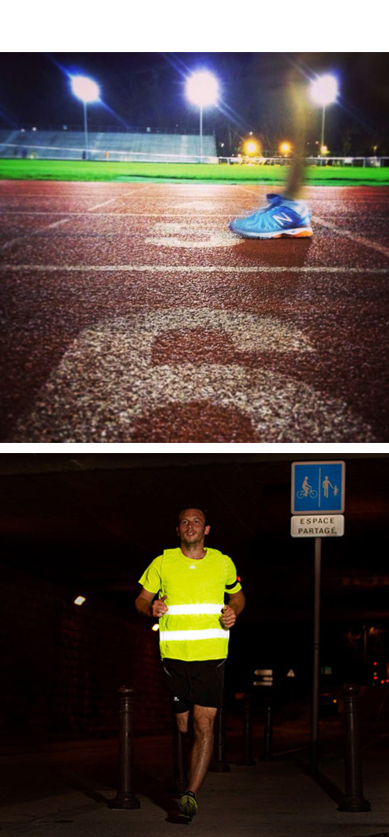
post date: 05.06.15
Information courtesy of Williamson Country Running
These basic safety tips will help keep you safe even after dark.
OK, so best case scenario you are able to run with a group or running partner during daylight hours in a well populated area. But in the off chance that you are like me and every week your schedule is different and sometimes you have to run alone in the wee hours of the morning when it is pitch black. Here are some general safety guidelines to follow.
- Turn off the music. I know it is hard to run without music when you are so used to having it on, but it takes away your ability to be completely aware of your surroundings. Use this as an opportunity to listen to your breathing or taking notice of your stride, or even as a time to clear your mind and focus on the things in life that are really important.
- Carry pepper spray/mace. It is fairly inexpensive and it is not bulky to carry in your hand while running. This can be an extra shield of defense for you if someone sneaks up on you or if an animal is coming after you.
- Do not run close by bushes or parked cars. If you are on a street that is lined with shrubs or bushes or if you see a parked car, move to the other side of the street or put as much distance as you safely can without running in the middle of the street.
- Run in well-lit areas. This may take a little practice as it is hard to tell which streets are well-lit during the day time. Do not go down a street that looks pitch black. If there are not a lot of streets that are lit in your area, buy a headlamp or some other form of light to carry with you. This will also help to keep you from tripping over uneven ground.
- Do not run the same route every day.
- Take your phone with you on your run.
- Do not run a new route when it is dark. Wait until you can run in the daylight to explore new routes and trails.
- Wear reflective and bright color clothes. I have noticed that a lot of my workout clothes are black, so if this happens to you, you can go to Target or Walmart and buy an inexpensive reflective plastic vest. I have seen them in the fitness section or camping section of the store.
- Look for local running groups in your area that you may be able to join as there is always safety in numbers.
- Check your local neighborhood schools and recreation areas for a running track. Often there will be an athletic field in the center and team sports may be using the facility at the same time. There will often be lights and other runners, athletes or spectators using the facility.
- And last, if something feels off or you feel like someone is following, call the police or head for a populated place, even if that means banging on a strangers door to get to safety.
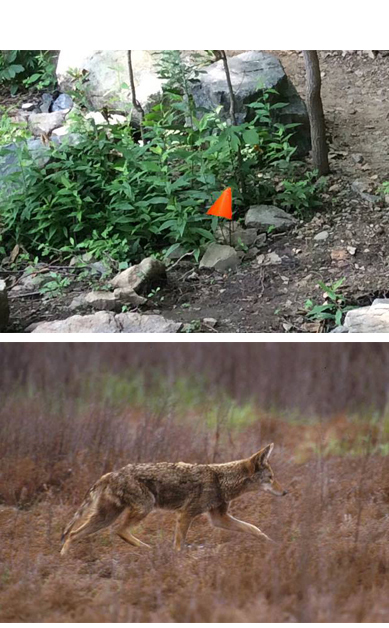
post date: 12.08.15
Newly Marked Trails Can Lead To Increased Wildlife Encounters
It Takes Time For Wildlife To Adapt
Often trails follow a creek or natural landscape and created by the animals in the area to navigate through the environment. When sharing open space and trails with wildlife, there is always the chance of an encounter. Most occur without incident as wildlife usually would prefer to avoid humans. When a trail is used frequently by humans and the presence of human scent becomes more established, the animals will then usually avoid the trail entirely and create a new trail nearby if the terrain allows. Whenever using smaller, less-established trails there is an increase in the possibility that pigs, deer and coyotes may still be it, so it is advised to be cautious and aware of their possible presence.
Newly established trails in any area are fun to explore for variety. When they are clearly marked the process is safer and requires less navigating. Unmarked trails or animal trails can require concentration and awareness of even subtle landmarks. A trail that animals use can often quickly become impassable for humans due to terrain or overgrowth. and for humans. It is then that attention to details are important in case doubling back is required on a a “dead end” trail to be sure you end up back where you started.
Here are some items that are advised to have when out exploring new trails:
- Water and/or nutrition
- Slicker, jacket or other additional clothing
- Pepper spray or a loud whistle
- Cell phone